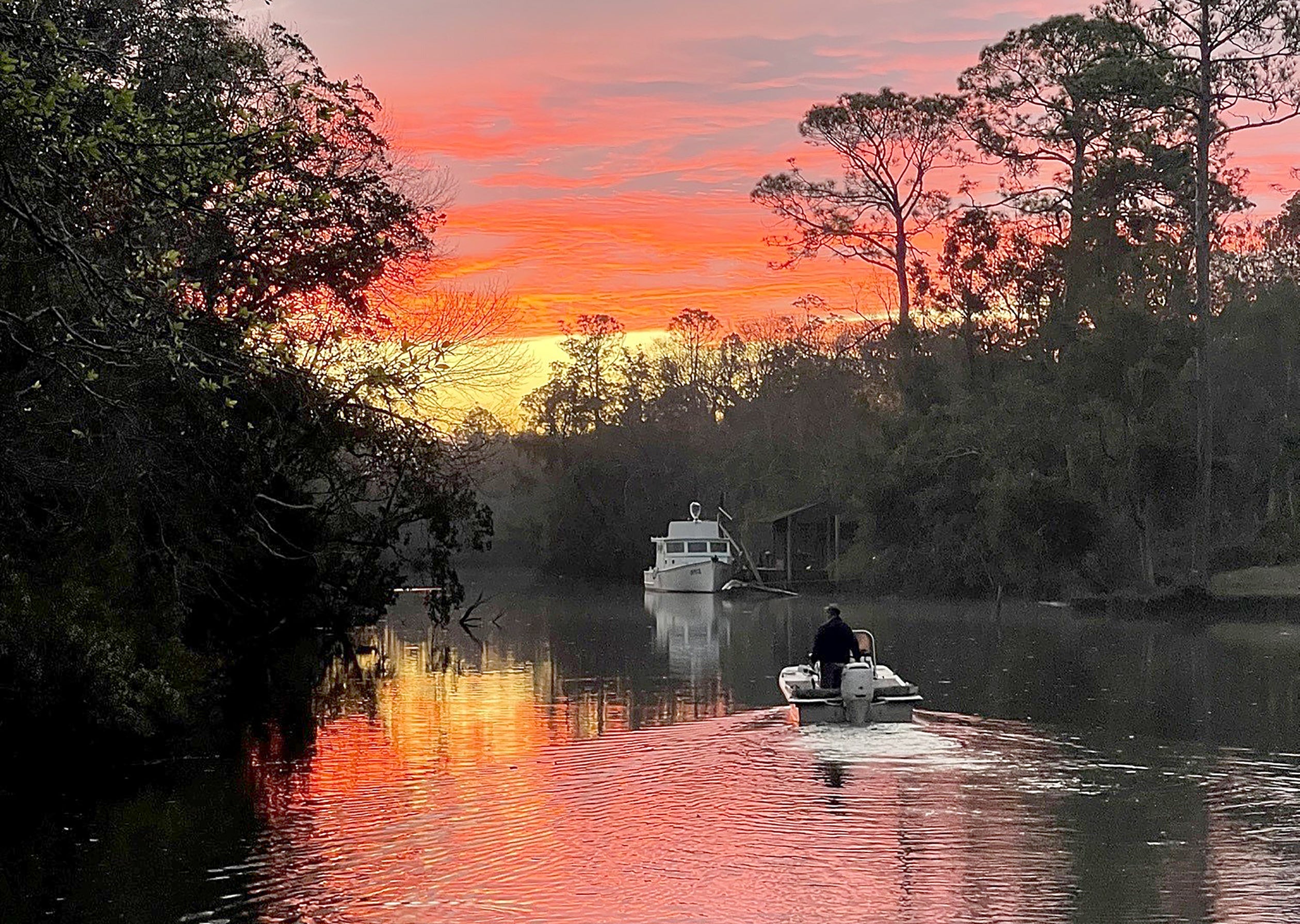By DAVID RAINER, Alabama Department of Conservation and Natural Resources
Protecting a nationally recognized estuary in a rapidly developing coastal area can be a bit like putting together a puzzle where the pieces are constantly being shuffled and changed. This is exactly the challenge faced by the Alabama Department of Conservation and Natural Resources (ADCNR) Weeks Bay National Estuarine Research Reserve.
Managed by the ADCNR State Lands Division (SLD) and funded in part through the National Oceanic and Atmospheric Administration (NOAA), Weeks Bay Reserve is part of a network of thirty protected estuaries around the country. The Reserve System was established to provide research, education, and outreach related to understanding the function and management of estuaries, which provide important ecosystem services such as protection from storm surge, removal of nutrients and pollutants from coastal waters, and serving as a nursery ground for recreationally and commercially important fish and shellfish.
Will Underwood, Coastal Section Administrator with the ADCNR SLD, said that part of the long-term strategy for maintaining the health of the waters of Weeks Bay includes willing-seller land acquisition.
“Successful acquisition of land in a rapidly growing area such as Baldwin County requires a great deal of teamwork with partners,” said Underwood, who assists with land stewardship efforts at the Reserve. “We have been fortunate to have access to a variety of funding sources over the last decade – including competitive funding from NOAA, support from the Alabama Forever Wild Land Trust, and funding from the Deepwater Horizon Natural Resource Damage Assessment Alabama Trustee Implementation Group (ALTIG) – that have allowed for acquisitions in the Weeks Bay watershed.”
Flexibility is the name of the game, says Underwood, when it comes to leveraging available funding. For example, when a parcel initially slated for purchase with NOAA funding fell through, ADCNR quickly pivoted and identified other willing-seller tracts in the Meadows (County Rd 1) and Sunset Shores/Swift Tract areas surrounding the Weeks Bay project area. Working with matching funds from the Forever Wild Land Trust, these parcels were ultimately acquired for the benefit of future generations.
Many recent acquisitions resolved critical gaps that have long made land management extremely challenging.
“We are always looking for ways to make our land management efforts at the Reserve more efficient and effective,” Underwood said. “Tying these parcels together allows us to conduct prescribed fire activities in a manner that better mimics natural burns and reduces the cost of installing and maintaining duplicative fire breaks.”
The three most recent acquisitions in the watershed include the Holmes Tract, 90 acres on Magnolia River at the intersection of Weeks Creek and Magnolia River; the East Gateway – Williams Tract, a 163-acre parcel at the mouth of Weeks Bay; and the Lloyd-Worcester Tract, a 60-acre parcel on Waterhole Branch and Green Branch on Fish River. These purchases were primarily funded through the ALTIG as part of Deepwater Horizon Natural Resource Damage Assessment funding. Additional funding was provided through a NOAA competitive grant opportunity. Underwood said the three parcels will protect over 3 miles of shoreline in the watershed and, with these parcels, the families made the decision that they wanted to be involved in conservation as part of their family legacy.
“We have some family history on the Holmes Tract,” said Underwood. “It’s a family connection of long-term ownership. Broox Holmes, who is in his mid-90s, is really proud of the heritage there. His father, Dr. W.C. Holmes, a local physician and Alabama State Senator, was instrumental in the state’s purchase of land in the 1920s for the establishment of Gulf State Park. Dr. Holmes and his wife, Philomene, once planned to build a family home on the parcel, so the family was very happy to see it preserved.”








